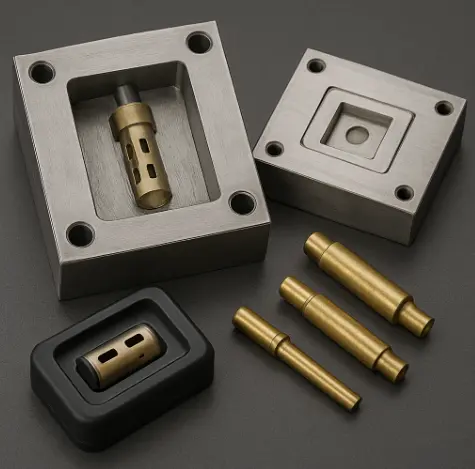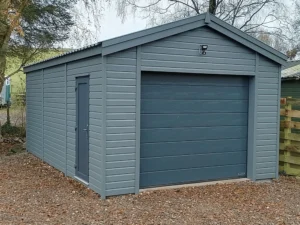Insert injection molding and plastic insert molding have become cornerstones in modern manufacturing — especially for industries that require strong, lightweight, and integrated components. These techniques combine the structural advantages of metal inserts with the flexibility and efficiency of molded plastics, creating parts that are more durable and easier to assemble. But achieving success with insert molding is more than choosing the right plastic or having the right insert. It all begins with precision tooling — and that means working with a custom mould maker who understands how to design, build, and deliver the right mould for the job.
This guide walks through how custom mould makers contribute to successful insert injection projects, from design to delivery, along with real-world use cases that show what’s possible when the right process meets the right tooling.
The Basics: What Makes Insert Injection Molding Unique?
Insert injection molding is a process where a pre-formed component — usually metal — is placed into a mold, and plastic is injected around it to form a single, integrated part. This eliminates the need for secondary assembly, increases strength, and reduces weight and size.
Applications span across industries such as automotive (gear housings, threaded inserts, sensor assemblies), medical (surgical tool handles, catheter tips, implant components), electronics (connectors, battery contacts, shielding elements), and consumer products (knobs, handles, plugs with embedded metal parts). While the process itself is standardized, achieving high-quality results comes down to the tooling. A custom mould maker plays a key role in making sure the insert fits perfectly, the plastic flows correctly, and the finished part meets all functional and aesthetic requirements.
Step 1: Collaborative Design Planning
The first step is design consultation. This is where product engineers and the mould maker align on part geometry, materials, production volumes, and expected tolerances.
For example, a company manufacturing smart thermostats needed a plastic housing with an embedded copper heat sensor. The insert had to be precisely centered and sealed within the plastic to ensure thermal accuracy. Off-the-shelf moulds didn’t offer the alignment precision required.
The custom mould maker worked closely with the design team to modify insert geometry for easier loading, optimize gate placement to avoid weld lines near the insert, and design a mold cavity that ensured minimal warping during cooling. This level of collaboration helped deliver parts that worked as intended from the first production run — no costly design changes needed.
Step 2: Insert Retention and Placement Engineering
Inserting metal into a mold sounds easy — but holding it firmly in place through multiple high-pressure cycles is anything but. A key part of insert molding success is designing custom retention systems.
A medical device company needed to mold a plastic body around stainless steel surgical tool inserts. These inserts were small, slippery, and required exact alignment for regulatory compliance. The mould maker built a cavity with locator pins, a mechanical locking system to prevent insert movement, and a sensor-based verification setup to ensure inserts were loaded correctly before each cycle. The result was a 99.8% first-pass yield rate — essential in an industry where failure is not an option.
Step 3: Tooling Materials and Mould Design
Custom moulds aren’t just about geometry — the materials used matter too. Tool steel hardness, thermal conductivity, and surface treatment affect not just part quality but also tool life.
In one case, an automotive supplier needed a component that would be molded using glass-filled nylon, a material known for its abrasiveness. The mould maker selected hardened H13 tool steel with a nickel-based surface coating to reduce wear. This extended the mould’s life by 40% and cut down on unplanned maintenance. The mould also featured dedicated cooling channels, efficient ejection systems, and a two-cavity layout to speed up production while maintaining quality.
Step 4: Prototyping and Testing
Before full production, most mould makers offer prototype tooling or pilot runs. This is where real-world issues are identified and resolved.
A telecom company used insert molding to create fiber optic connectors with embedded metal contacts. During early tests, parts showed signs of uneven plastic flow and minor flash near the insert edges. Using insights from these test runs, the mould maker refined gate placement, adjusted venting, and reworked cooling cycles. Within a week, the next batch of parts met all performance and cosmetic requirements. Because they used a modular prototype tool, the fixes were fast and cost-effective.
Step 5: Delivery, Support, and Continuous Improvement
Once the mould is delivered, ongoing support matters. Custom mould makers often provide ramp-up assistance, maintenance schedules, and even remote monitoring through embedded sensors.
Some advanced moulds now include smart sensors that monitor temperature, pressure, and cycle timing in real time. This data helps manufacturers maintain quality, prevent breakdowns, and extend tool life — all without interrupting production. A consumer electronics company using such a mould reported a 15% improvement in overall equipment effectiveness over six months.
In one case, a plastic injection molding manufacturing company specializing in plastic insert molding worked with a custom mould maker to develop tooling for a new line of consumer electronics. The inserts were small brass contacts, and the mould had to accommodate automated loading without damaging the components. The result was a robust, high-volume production system that reduced cycle time by 18% and scrap by 12%.
Final Takeaway: The Right Mould Makes the Difference
Insert injection molding offers big advantages — stronger parts, fewer steps, and better integration — but only if the mould is designed and built for the job. A high-quality custom mould ensures precise insert placement, reliable cycles, and consistent part quality from day one.
Whether you’re producing medical tools, smart devices, or automotive components, success starts with the mould. Choose a mould maker who understands your product, anticipates your challenges, and delivers tools that work from design to delivery.
Also Read- Auradine Teraflux AT2880: High-Performance Mining Hardware Overview










